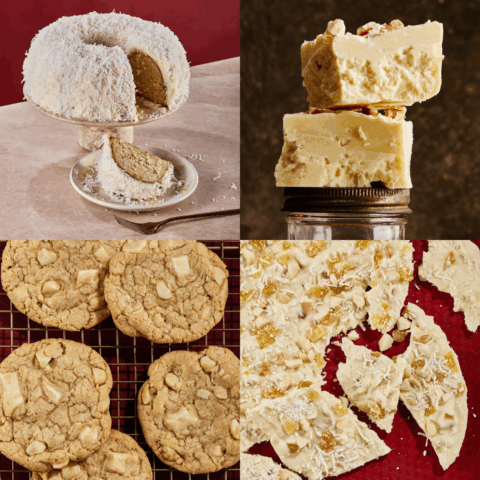Cast iron is my absolute favourite vessel to cook in. It is durable, versatile and a reliable cooking material with excellent heat retention properties. I can use it on stovetops, in ovens or over an open flame, and it is perfect for both savoury and sweet dishes. My favourite things to cook in cast iron are pancakes and cinnamon rolls, sautéed veggies, stir-fry, fried potatoes, pot pie and cobblers. I use stainless steel pots only for steaming veggies or cooking soups and stews. Cast iron is indestructible and will last you a lifetime – in fact, you can pass it down through the generations.
Caring for cast iron is a little more involved than for most other types of cookware, but it is very manageable. The key is seasoning, or creating and maintaining a nonstick surface that protects the cast iron, helps prevent rust and is longer-lasting and healthier for you than manufactured nonstick coatings. Oil heated on the cast-iron surface bonds with the metal to form a protective layer. With continued use, the layer becomes thicker and the surface becomes more nonstick, making it easier to cook with and clean.
There are differing opinions on how to clean and care for cast iron, but here is what has worked for me.
Seasoning cast iron
- Preheat your oven to 450°F (232°C).
- Scrub unseasoned cast iron or cast iron with broken-down seasoning with hot soapy water. Use a stainless steel or chainmail scrubber to remove any debris.
- Dry well with a towel.
- Lightly coat every part of the cast iron, including the handle and bottom, with coconut oil or other oil with a high smoke point, such as flax or avocado. Do not use olive oil.
- Wipe away any excess oil that might cause the cast iron to smoke.
- Place the cast iron upside down in the oven for about an hour, then turn off the oven and let the cast iron cool completely before removing it.
- If it has a shiny black luster and isn’t tacky to the touch, it is ready.
Cleaning cast iron
- Use a wooden spatula to remove any food debris.
- Clean the cast iron with warm water and a stainless steel or chainmail scrubber to remove any remaining debris, if necessary.
- It is not recommended to use soap, as doing so might strip the cast iron of its seasoning. However, I sometimes do use soap with warm water to help soften stuck-on food. If you use it, be sure to rinse thoroughly and check that the seasoning is still intact.
Tips for cooking with cast iron
- Always preheat the skillet before adding anything to cast iron, even oil.
- Add a little bit of oil or butter to the pan before you put anything else in it.
- Try not to flip and mix a lot when warming food. (I have found that the more you move things around, the more it coats the pan with other substances and can tend to stick.)
- Experts recommend oiling cast iron after every use. I just rub a little bit of coconut oil on the pans each time. You can season it two or three times a year, or as needed.



















